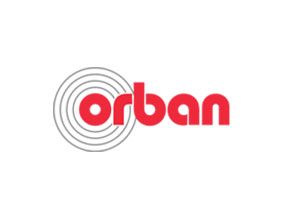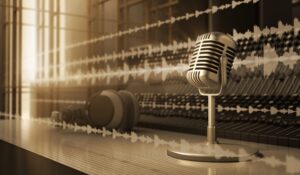 The Gold Book is Bob Orban and Greg Ogonowski’s new edition of “Maintaining Audio Quality in the Broadcast and Netcast Facility” for Engineers, IT Specialists, and General Managers.
The Gold Book is Bob Orban and Greg Ogonowski’s new edition of “Maintaining Audio Quality in the Broadcast and Netcast Facility” for Engineers, IT Specialists, and General Managers.
Achieving excellent on-air and online quality audio is more important than ever
because of the intensely competitive nature of available media. “Good enough” no
longer works. Persuading audiences to listen and then return requires attention to
quality at every stage of the production process, from program sources to audio
processing.
This guide will help you achieve your quality on-air and online audio broadcasting
and netcasting goals.
Achieving quality audio is difficult. It requires serious commitment on several levels.
You might think that in this digital age, software would make this trivial. But software varies widely in quality and. will only be as good as its operator, assuming the
software works correctly to begin with. Knowledge is crucial.
Achieving a BIG sound requires financial investment, but this kind of sound creates
revenue opportunities and easily pays for itself. You must avoid the “rinky-dink”
tinny radio sound that has become synonymous with so much on-air and on-line
content. This is a “turn-off” in every sense of the word and will drive listeners away. Your audio source content must be pristine. It all starts at the source and many audio source problems cannot be fixed with realtime processing. Your on-air and online audio content needs professional audio processing to achieve consistency and level control, as well as accurate, high-performance radio transmitters and audio encoders to preserve the integrity of the controlled audio. Your software and hardware tools must be chosen very carefully; their performance is not equivalent. You can’t simply “play records” into a transmitter and/or encoder and hope that can compete. You won’t!
The same, if not better efforts that are used for your terrestrial on-air sound quality,
should now be applied to your streaming audio content. Many terrestrial radio stations go through painstaking efforts to deliver audio quality that attracts and holds listeners. This includes starting with good audio source material, using capable professional audio playout software, and applying professional audio processing to provide a consistent, polished, “branded” sound to their audience.
Streaming has now become just as important because more and more audience is listening to streams instead of traditional terrestrial transmitters. This also means that you
should use a professional, high-performance streaming audio encoder to deliver the
streams to your audience. Not all streaming audio encoders sound equally good at a
given bitrate. They need to be chosen wisely.
 Almost all new automobiles are now equipped with Apple CarPlay and Google’s Android Auto. It is literally easier to connect to a stream from the dashboard than to tune the
Almost all new automobiles are now equipped with Apple CarPlay and Google’s Android Auto. It is literally easier to connect to a stream from the dashboard than to tune the
radio. Moreover, the stream has the added potential of greater coverage with much
better audio quality. With StreamS efficient AAC Encoders, bandwidth usage and
cost are no longer a restriction. Reliability is crucial. Your transmission system should be provisioned with adequate fail-over protection.
The “Digital Divide”
Broadcasting and netcasting now rely heavily on Information Technology (IT).
Achieving consistent state of the art audio quality in broadcast is a challenging task.
It begins with a professional attitude, considerable skill, patience, and an unshakable belief that quality is well worth having. It usually requires the careful cooperation between programming, engineering, and computer IT departments.
With the advent of computer-based audio systems and computer network-delivered audio, it requires extra computer IT knowledge. Computer IT personnel should understand
digital audio fundamentals. Broadcast engineers and IT professionals tend to have
different skillsets. Contemporary broadcasting and netcasting require merging these
two so that practitioners are competent in both. There should be no “digital divide.”
The “digital divide” refers to IT specialists and broadcast audio specialists who are
experts in their own specialties but may lack understanding about others. This typically results in poor communication, misunderstandings, and suboptimal technical
solutions to problems that require input from both areas of expertise. Broadcast and
computer industries have different terminology, with many same or similar terms
having different meanings. This “lingo” needs to be understood correctly by both
departments.
Just because something is possible doesn’t mean it’s advisable. Many multimedia
developers have done more harm than good to the broadcast and netcast industry
by poor development and lack of understanding of the business, resulting in poor
software and hardware solutions. Not embracing existing standards and protocols
has been another problem, which causes system interface incompatibilities. This
moves things backward, not forward.
To best serve audiences, digital and computer technologies are supposed to move
multimedia forward, and the digital divide needs to be bridged for this to happen
optimally: IT specialists need to learn about professional audio, both analog and digital, and broadcast/audio specialists need to learn about networking and streaming.
In this spirit, we hope that this book will be useful not only to broadcast/audio specialists, but also to IT specialists.
Find the entire publication here on the Orban website.



